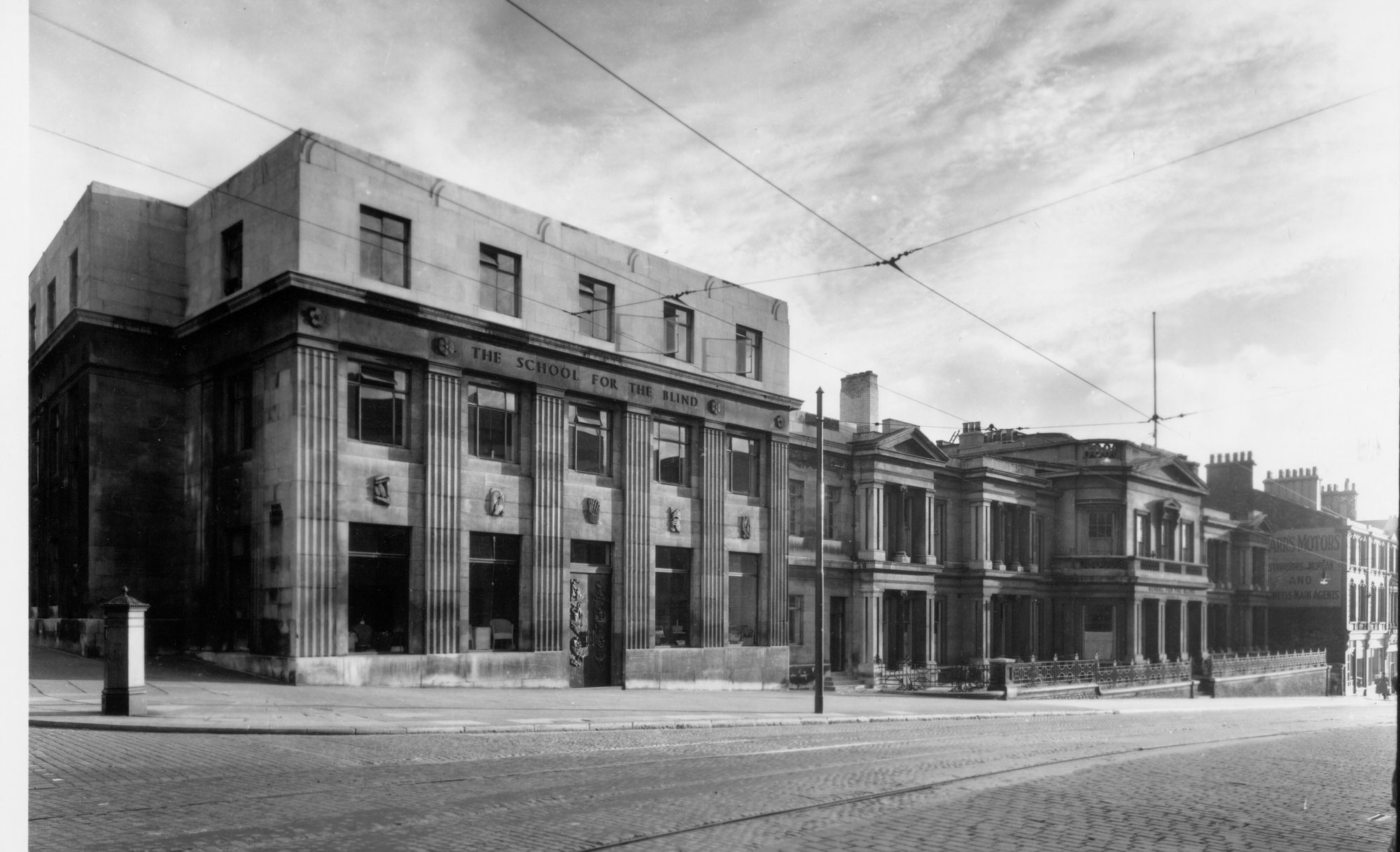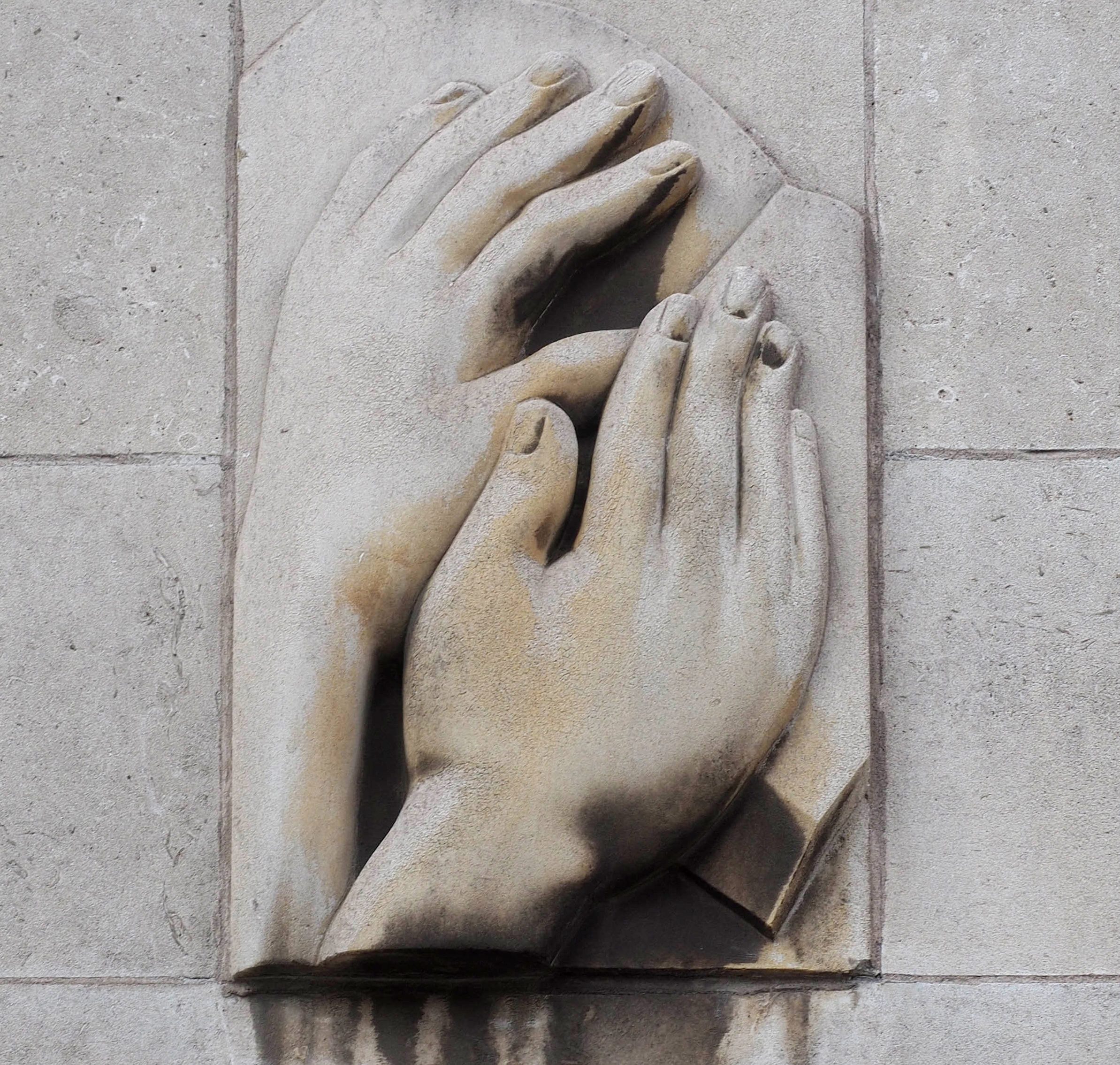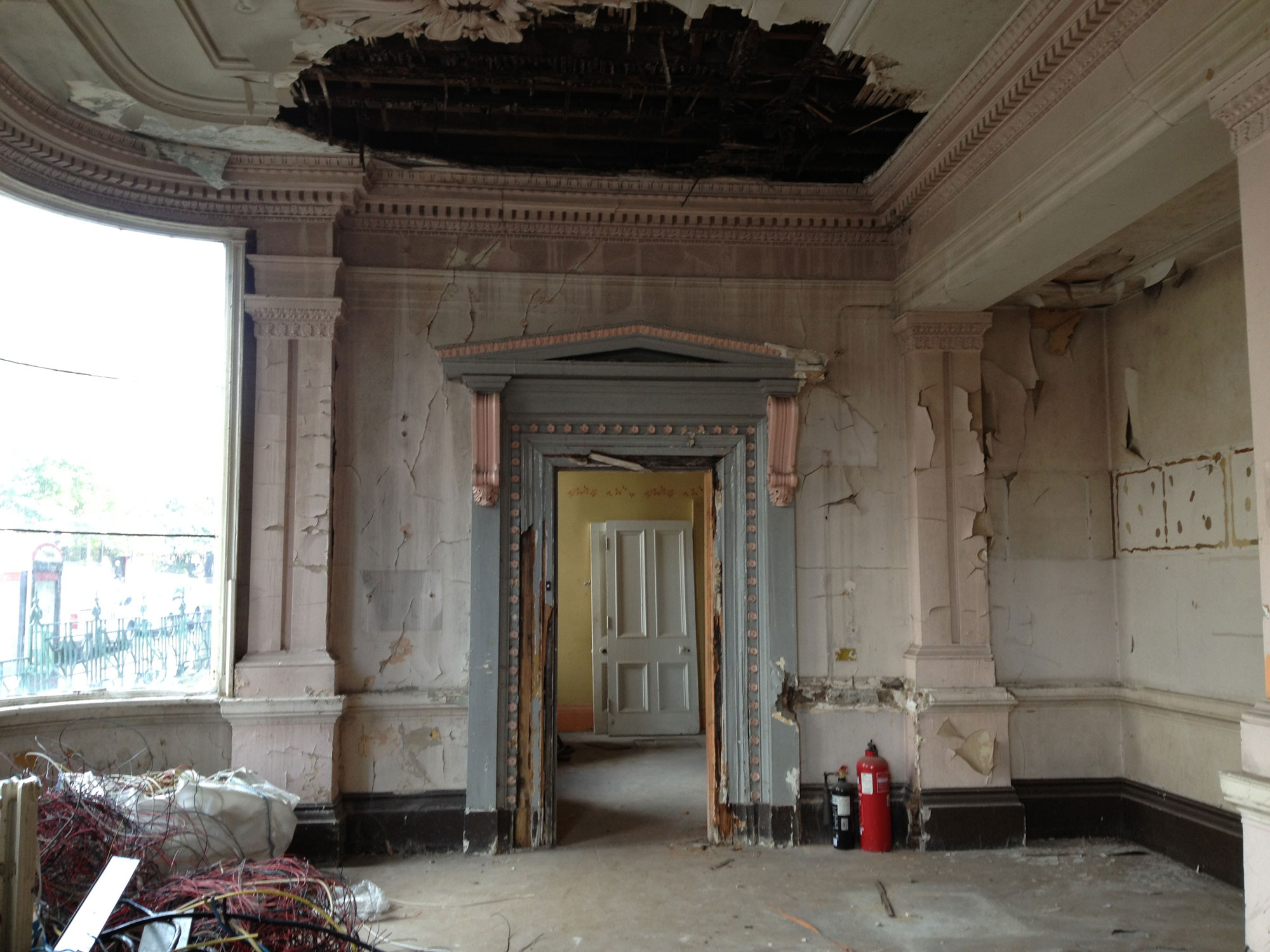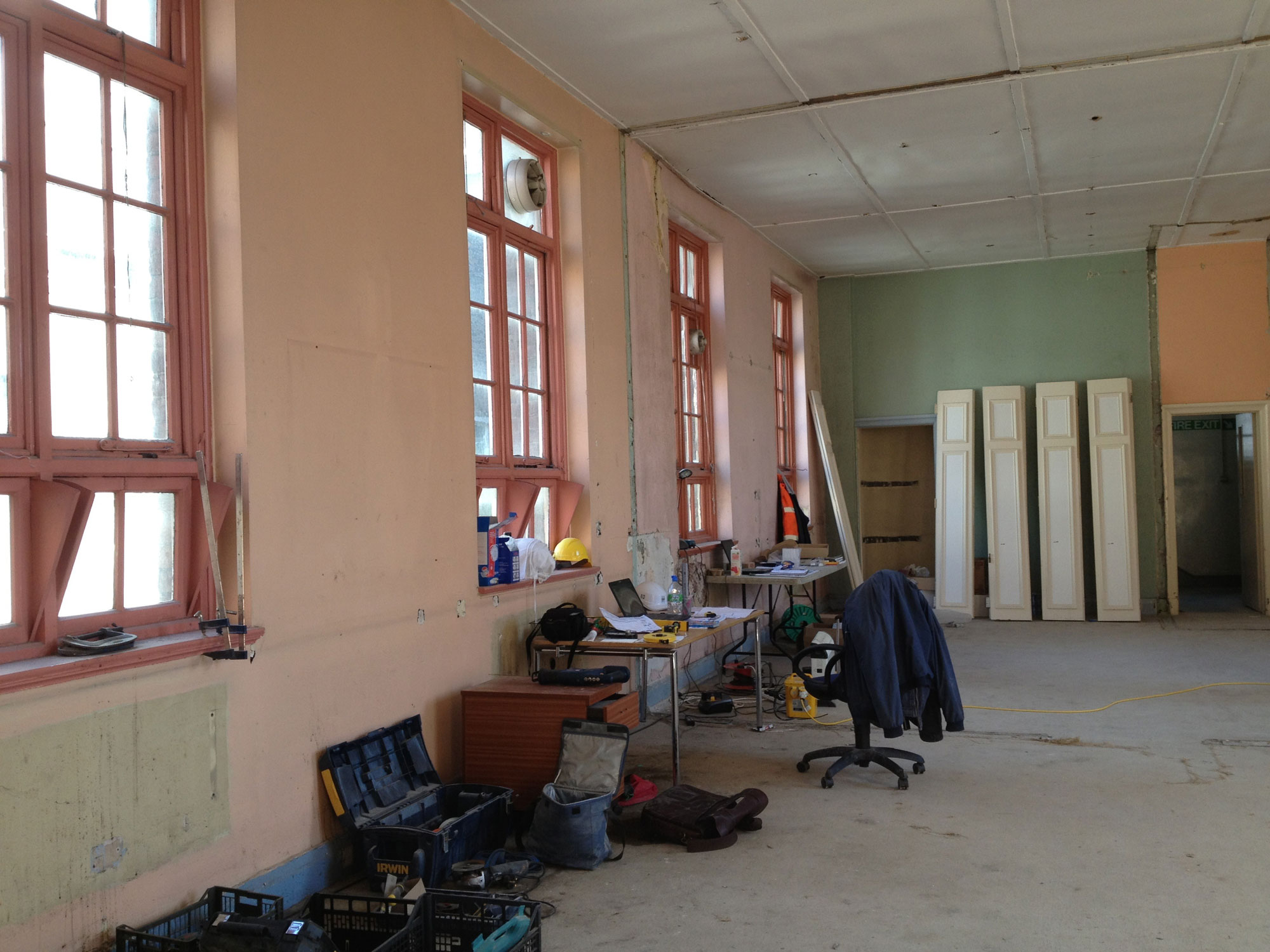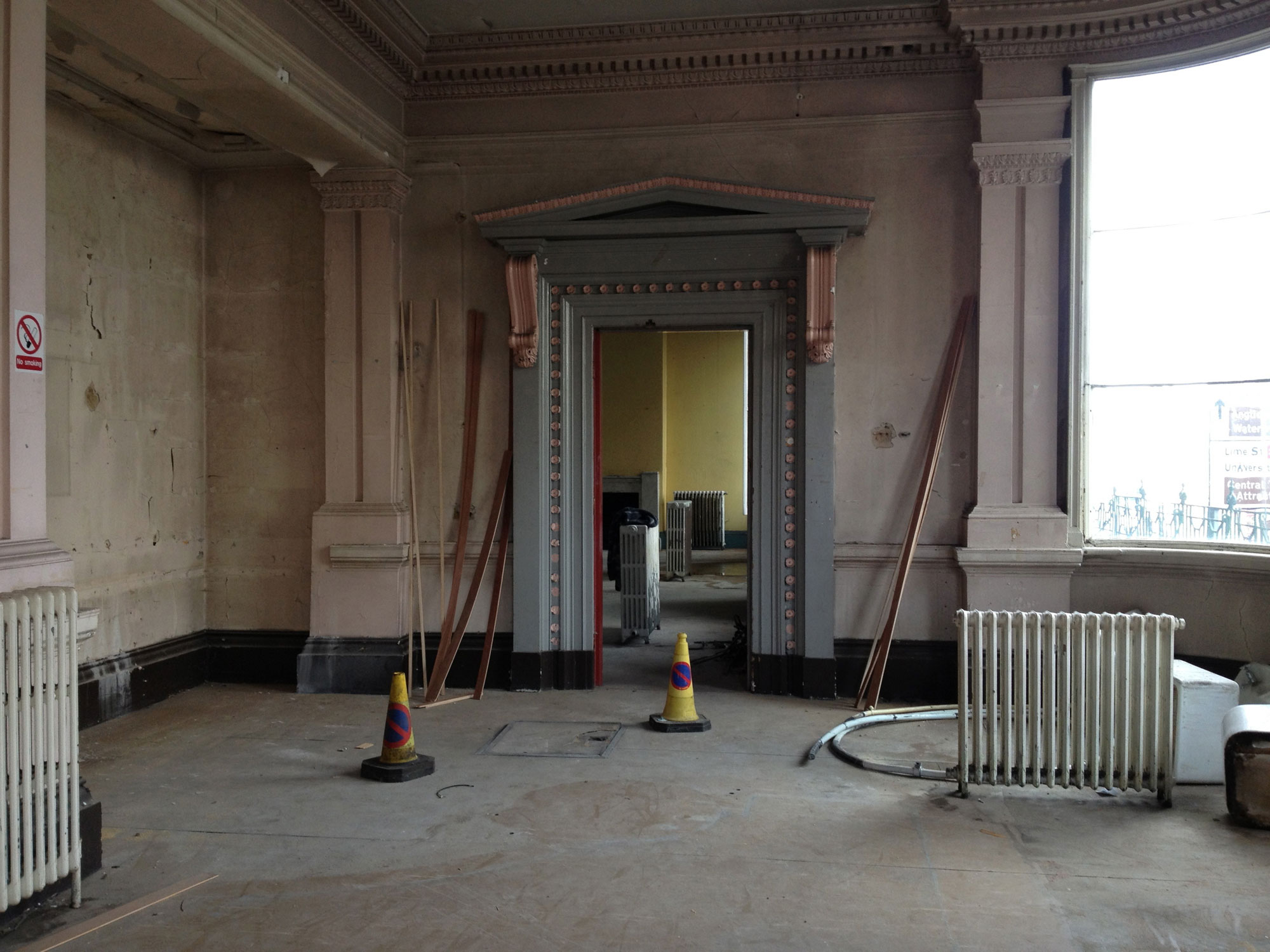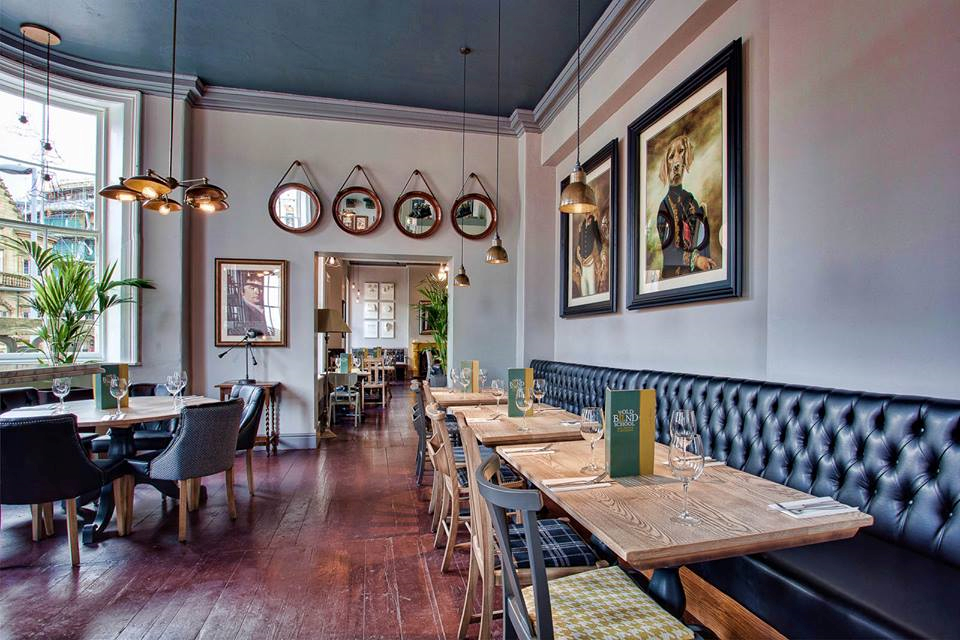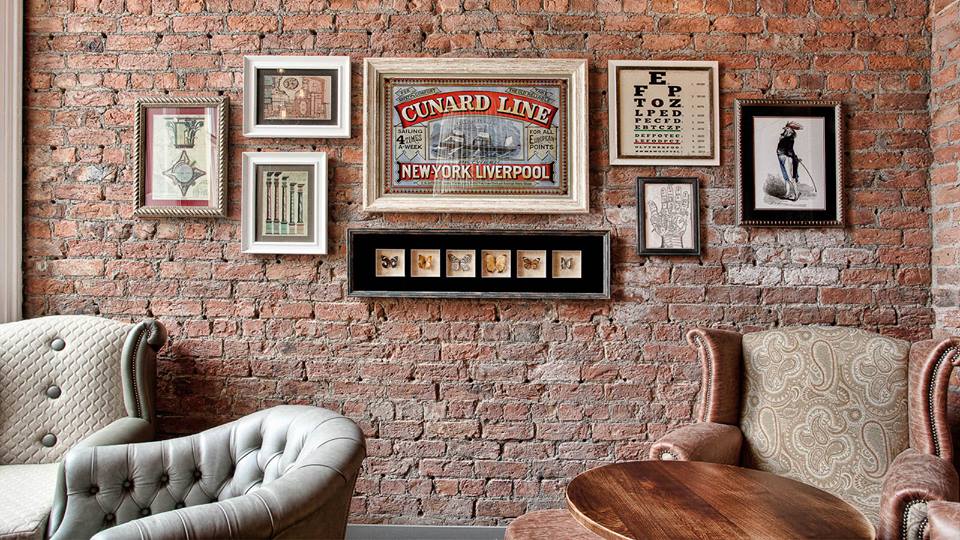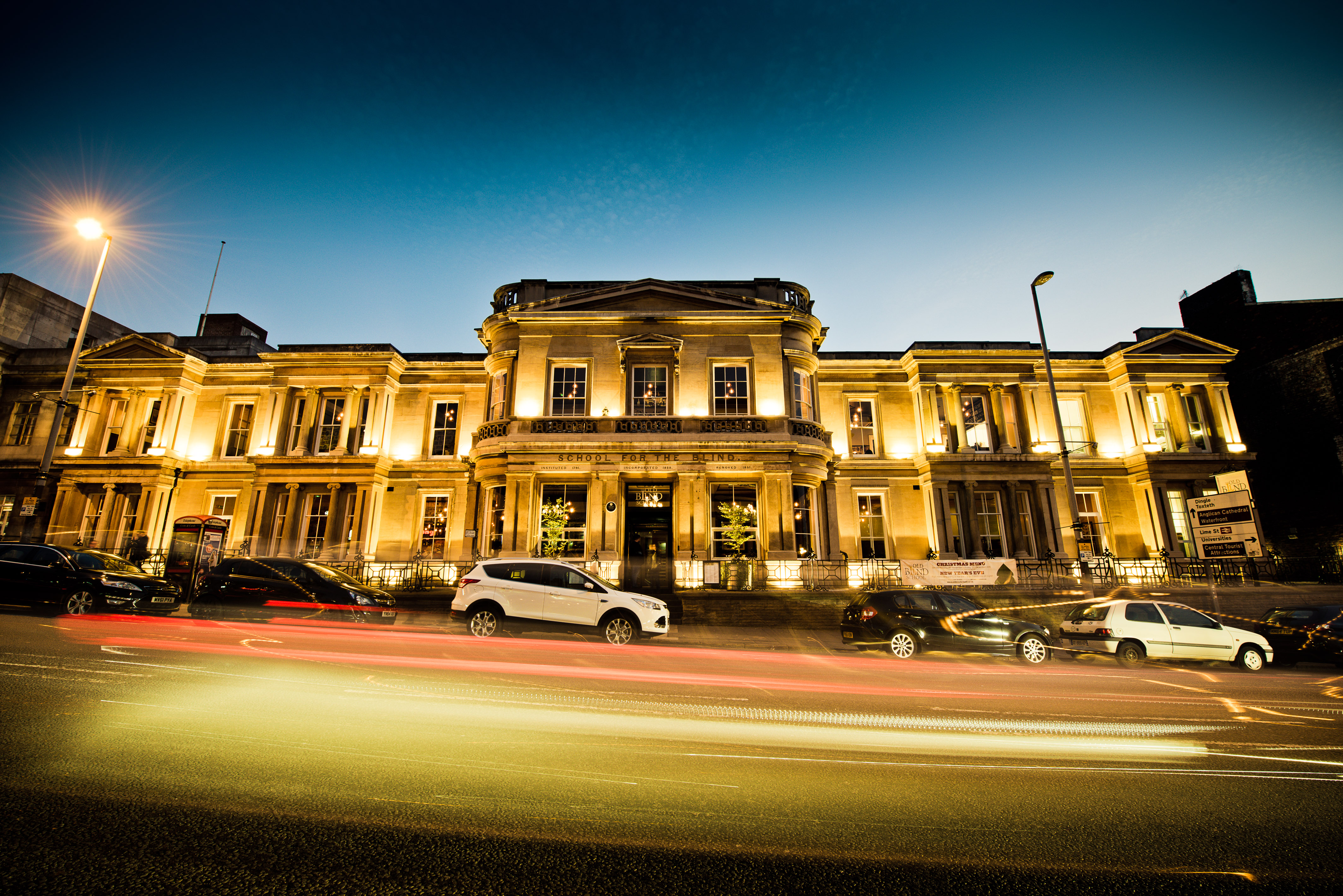The School for the Blind’s first building was a modest cottage style building on London Road Liverpool, with a much grander chapel added in 1819. Thirty years later, in 1851, the school moved to a new site on donated land at Hardman Street, and built a far more aspirational building.
When the School moved, it took its chapel with it. A replica of an ancient Greek temple, it was in keeping with the ambitious main building at Hardman St. By now, the school was a teaching institution that provided students with a trade or instruction in music, and it had a royal patron. The chapel, which can be seen in this picture, was eventually demolished in 1927 as the School wanted to build a new extension and it had become less popular since the building of Liverpool Cathedral.
The School flourished at Hardman Street for more than a century. Then in 1958, it moved wholly to its other site in Wavertree, and sold the property to the Liverpool Corporation for £47,000.
The Hardman St building became Liverpool City Police Headquarters until 1982, then it was used by the Merseyside Trade Union with facilities including a small theatre, nightclub and recording studio. From 2004, when the centre closed, it became derelict.
These images from the Hidden Liverpool project, taken by Carolyn Murray show the building in this period, with peeling paint meeting grand neoclassical design.
##cut##""
The building has now been renovated to become a restaurant. In its name and decor, The Old Blind School, it retains a memory of the building’s history, combining restoration of some original fittings with a modern look.
##cut##""
The Old Blind School retains its heritage by showcasing various models of brailler and the tools of leather good production on its walls. A framed portrait of Edward Rushton, the School’s founder, hangs proudly in the main bar.
The renewal of a historic building for a new purpose which honours its past is typical of the wider regeneration of Liverpool.
- The Hardman Street building on the Hidden Liverpool project website.
- More about Edward Rushton, who founded the School, and the DaDaFest play about his life, Unsung.
- Read the timeline of the School for the Blind.
- Sign up to our newsletter to hear more about our plans for an exhibition about the School for the Blind at the Museum of Liverpool in 2018, and the digital and real world games we are planning.










